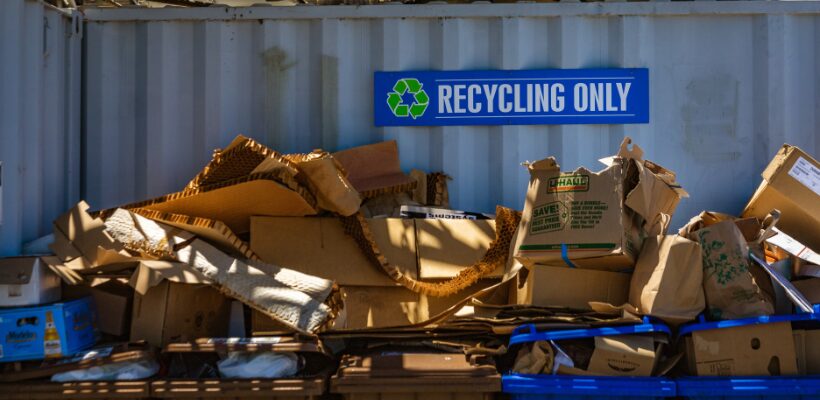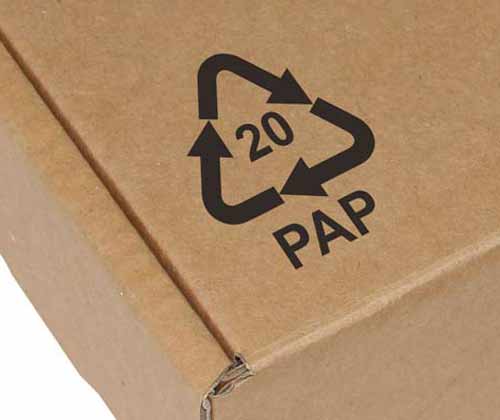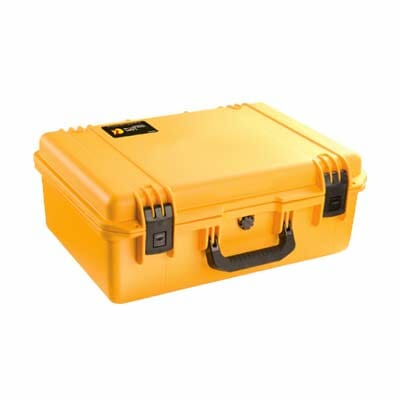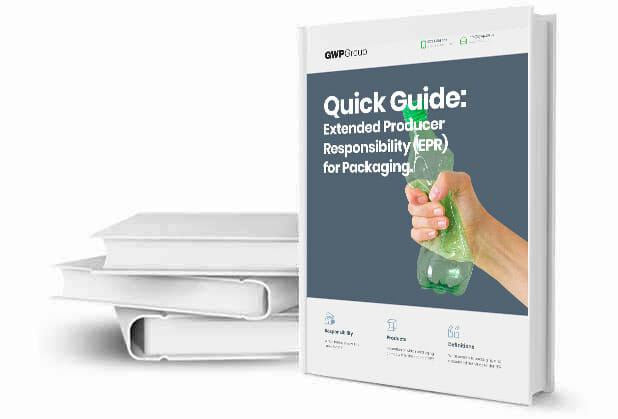Introduction
Why businesses need to plan for fees under EPR
Extended Producer Responsibility (EPR) is one of the most significant changes to UK packaging laws in decades. Basically, it shifts the costs of dealing with packaging waste away from taxpayers and local authorities and places it with the businesses that place packaging on the market.
Suppose your company manufactures, imports, or supplies packaging. In that case, this means you’ll be directly responsible for covering the costs of its collection, recycling, and disposal. While the principle sounds straightforward, the reality is that EPR introduces a complex set of fees, thresholds, and reporting requirements that vary depending on the size of your business.
This blog explains exactly what fees apply, who has to pay them, when they’re due, and how they could affect your bottom line. By the end, you’ll know what to budget for and the steps to take now to avoid unnecessary penalties later.
Contents
What are EPR fees?
Charges that are designed to fund packaging waste management
Extended Producer Responsibility (EPR) fees are essentially the mechanism through which the government ensures that businesses cover the actual cost of managing packaging waste. Under the old Producer Responsibility system, businesses already contributed through the purchase of recycling evidence (PRNs); however, under EPR, the fees are more comprehensive, directly funding the collection and treatment of household packaging.

Essentially, if your business places packaging on the UK market, you must now pay for the impact it has on the environment. This includes recycling costs, sorting, transport, and disposal processes that occur after the customers have disposed of the packaging.
It is important to note that these fees are not a “one-size-fits-all” situation; they are linked to both your organisation’s size and the types of packaging that you use. This means businesses with high volumes of harder-to-recycle materials, such as plastic films or composite packs, will face significantly higher costs than those using simpler or more widely recyclable formats like corrugated cardboard.
Who has to pay EPR fees?
What businesses are obligated to pay under the new system
Not every business will be caught by the Extended Producer Responsibility (EPR) legislation. Still, the thresholds are set low enough that many companies across manufacturing, retail, and distribution will be affected.
Small organisations
Small organisations are defined as those with an annual turnover between £1 million and £2 million and handling more than 25 tonnes of packaging per year, or those with a turnover above £1 million but placing between 25 and 50 tonnes of packaging on the market.
If you fall into this bracket, your obligations are relatively light, but you will need to register with the regulatory, pay a flat registration fee, and submit your packaging data.

Large organisations
Large organisations are those with a turnover above £2 million and place more than 50 tonnes of packaging on the market annually.
This group carries the most responsibility and the biggest financial burden. In addition to registration fees, large organisations must pay for the actual disposal of household packaging and purchase PRNs or PERNs to prove they are meeting recycling obligations.
This split between small and large producers is designed to protect smaller businesses from unfair costs, while ensuring that the companies placing the largest volumes of packaging into circulation are covering the majority of waste management expenses.
Types of EPR fees
The specific charges businesses will face
The financial obligations of the Extended Producer Responsibility (EPR) legislation can be divided into three main areas:
Registration fees
Every obligated business must register with either its environmental regulator or a compliance scheme. The registration process ensures that your business is officially recorded and reporting its packaging volumes.
If you register directly with the regulator, the fees are higher: £1,216 for small organisations, and £2,620 for large organisations. However, using a compliance scheme lowers this cost to £631 for small organisations and £1,658 for large organisations. Still, it’s important to remember that compliance schemes will typically charge additional service fees for managing your obligations on your behalf.
Late submissions and resubmissions also carry extra penalties, so it is essential to keep on top of your reporting deadlines. Larger groups with multiple subsidiaries, as well as online marketplaces, face additional charges too, meaning the structure of your business can have a real impact on your compliance costs.

Waste disposal fees
The most significant cost for large producers will be the new waste disposal fees. These payments are made directly to the government to fund the collection and recycling of household packaging waste.
From October 2025, invoices will begin to be issued based on the volume and type of packaging that was placed on the market in 2024. Fees are calculated per tonne of packaging, with different rates for each material.
| Packaging material | £/Tonne |
|---|---|
| Aluminium | 266 |
| Fibre-based composite | 461 |
| Glass | 192 |
| Paper and card | 196 |
| Plastic | 423 |
| Steel | 259 |
| Wood | 280 |
| Other | 259 |
From 2026, these fees will also become “modulated”, which will be influenced by the Recycling Assessment Methodology (RAM), a system that assesses how recyclable each type of packaging material is. Packaging that is easier to collect, sort, and recycle will incur lower costs. At the same time, harder-to-recycle materials will face higher charges, meaning the recyclability of your packaging will directly impact your business’s finances.
PRNs and PERNs
The third area of costs comes from PRNs (Packaging Waste Recovery Notes) and PERNs (the equivalent for exports). Large producers purchase these to demonstrate that a certain proportion of their packaging waste has been recycled.
Unlike registration fees, PRN costs are not fixed. The market sets them and can fluctuate significantly depending on the availability of recycling capacity for each material. For example, if there is a shortage of plastic recycling, the price of plastic PRNs can rise significantly. Businesses, therefore, need to budget carefully and plan for any possibility.
Key dates and deadlines
The timeline to staying compliance
Extended Producer Responsibility (EPR) obligations are phased in; however, the key deadlines are fast approaching. Small organisations were to register and pay their 2024 registration fee by 1 April 2025, and large organisations will need to register and pay for their 2026 obligations in October 2025. At the same time, the first disposal fee invoices will be issued, covering packaging placed on the market in 2024.
PRN and PERN purchases remain an annual obligation, with evidence required to show recycling targets have been met by year-end. Missing these deadlines can result in significant penalties, so keeping a clear compliance calendar is essential.
What this means for your business
The impact of EPR fees on small and large businesses
For smaller businesses, the impact of the Extended Producer Responsibility (EPR) legislation is limited but still important. Registration fees are manageable, but the administrative work of recording, packaging data and filing reports should not be underestimated.
For larger businesses, it will be far more challenging. Disposal fees alone can run into tens or thousands of pounds for companies handling large volumes of packaging, and PRN costs add another layer of unpredictability. The recyclability of your packaging materials will directly affect your costs, making packaging design decisions a financial issue as well as an environmental one.
Summary
Preparing your businness for the financial impact of EPR
The Extended Producer Responsibility (EPR) legislation fundamentally changes who is responsible for paying for packaging waste. For small businesses, the main cost is registration; however, for larger businesses, the combined weight of registration fees, disposal costs, and PRN obligations will be substantial.
The key actions for your business are straightforward: determine your business size, register with your regulatory or compliance scheme, forecast your expected disposal and PRN costs, and explore packaging changes that could reduce your long-term fees.
At GWP, we specialise in designing packaging that helps businesses reduce waste and cut their costs. By choosing materials that are easier to recycle, reducing any unnecessary weight, and simplifying packaging formats, we can help your business comply with EPR and minimise any fees that you’ll be charged.
Get in touch with our team of packaging experts today to see how we can help you.
Important notice
GWP believe this information is correct at the time of publication. The content of this article is also subject to change as the legislation is updated.
Please also note that the information provided is intended as a guide only. GWP can accept no responsibility or liability for loss, damage, or any other consequence of reliance on this information, howsoever caused. As all applications and scenarios vary, it is your responsibility or the responsibility of your business to ensure that you pay tax if and where applicable. If in any doubt, please check with your tax advisor.
Share this article
Further reading


About the author

David is responsible for driving improvements in sustainability at GWP and the wider Macfarlane Group, having previously performed a similar role for Zero Waste Scotland.
Featured products
Get in touch
Related guides
What is the packaging Extended Producer Responsibility (EPR)?
EPR reporting – what packaging data does the new scheme require?
Packaging Waste Regulations quick guide (2023 update)
A beginners guide to the Plastic Packaging Tax
Recycling symbols on packaging – explanation and free icon downloads
Recycling Assessment Methodology: What it means for your business
5 ways to avoid or reduce the impact of the tax on plastic packaging
















































